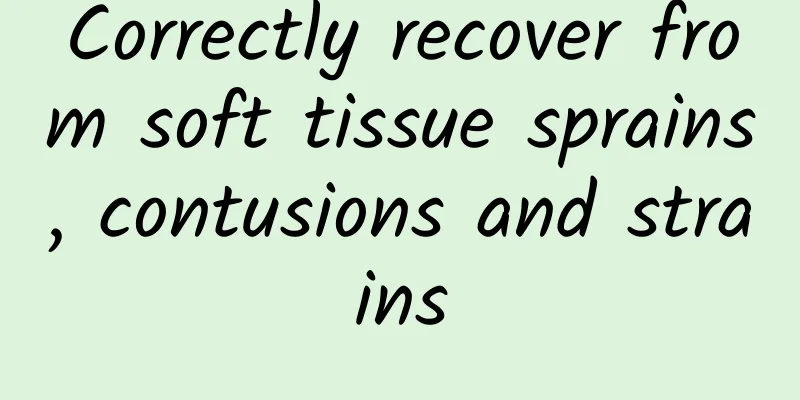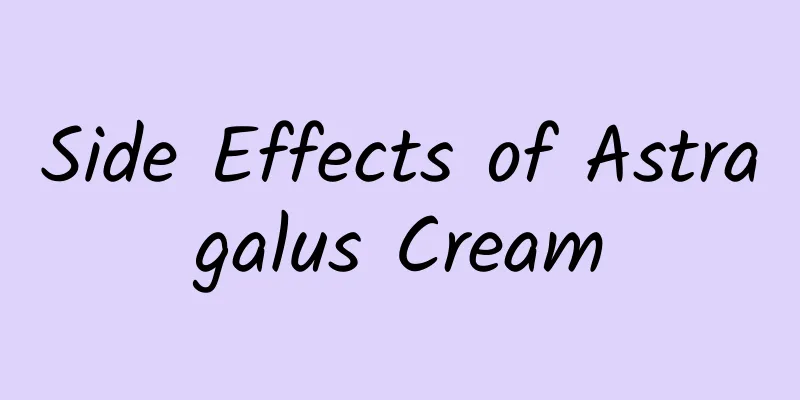Correctly recover from soft tissue sprains, contusions and strains

|
Soft tissue injury refers to inflammatory pathological changes such as local soft tissue swelling, congestion, exudation, etc. caused by uncoordinated posture or direct violent impact in daily life or work. So what are the symptoms of soft tissue sprain? symptom (1) Acute sprain Local swelling or muscle spasm and pain. There are local subcutaneous ecchymosis or hematoma, tenderness, and accompanied by limited movement or abnormal posture. (2) Chronic strain Local soreness, distension, dull pain or tingling, weakness or heaviness. The symptoms are not severe or persistent. They are relieved when resting or changing body positions frequently, and are aggravated by excessive activity, fatigue, or bending over for too long. The location of tenderness is not very clear, and only a large area of local discomfort can be pointed out; there may be relatively fixed tenderness points; there are no nerve irritation signs. Rehabilitation 1. General treatment: rest after sprain and contusion, local pressure bandage 2. Drug treatment: Apply pain-relieving ointment or apply pain-relieving medicine; or take oral non-corticosteroid anti-inflammatory analgesics and local drug blockade. Antidepressants are given to those who are depressed. 3. Physical therapy: It has significant analgesic, swelling-reducing and muscle spasm-relieving effects on soft tissue injuries. Generally, acute injuries are treated after 24 hours, with a small dose of 1-2 times/q, and can be cured in a short period of time; for chronic injuries, the dose is larger, once a day or once every other day, and the treatment course is longer. There are many such treatment methods, and you can choose 1-3 at the same time. (1) Cold therapy: ice compress, spray made of refrigerants such as ethyl chloride. (2) Magnetic therapy: Rotating magnetism, pulsating magnetism, pulsed magnetism, etc., placed on the affected area, 15-20 minutes/time, 1-2 times/day, 6-12 times a course of treatment. (3) Electrotherapy: interferential electrotherapy, electrokinetic therapy, transcutaneous electrical nerve stimulation (TENS) and other low and medium frequency electrotherapy, ultra-short burst therapy, microwave therapy, ultrasound therapy, infrared therapy, ultraviolet therapy, wax therapy, exercise therapy, traction therapy 4. Health education (1) Correct bad postures and adopt the correct postures for sitting, lying, standing, driving, writing, typing, and lifting heavy objects in life, work, and labor. People with chronic lumbar muscle strain can use protective equipment such as waist protectors. (2) Avoid excessive fatigue. If possible, change working posture frequently and pay attention to breaks and exercises during work. (3) Adhere to physical exercise, such as walking, jogging, cycling, swimming, etc. The type, duration, and intensity of exercise vary from person to person. 5. Traditional Chinese medicine treatment: Traditional treatments such as acupuncture, massage, cupping, etc. have good effects on soft tissue injuries. Painful tendon release can be performed if necessary. |
<<: Which department should I visit for shingles? Why is it so difficult to treat?
Recommend
How to enlarge breasts during pregnancy and seize the good opportunity for secondary development
Anyone who has been pregnant knows that their bre...
How to cure toothache
Toothache is very common in life. Some friends ca...
Can myasthenia gravis be cured?
Myasthenia gravis is one of a few diseases. It is...
What is the best food for kidney deficiency type neurasthenia?
As the pressure of today's society continues ...
What are the sequelae of cholecystectomy?
Patients who undergo cholecystectomy are prone to...
Is a mild cerebral infarction serious?
Mild cerebral infarction refers to a type of cere...
Can renal tubular acidosis be cured?
Renal tubular acidosis consists of three differen...
How does Chinese medicine take the pulse?
Traditional Chinese medicine often brings a sense...
What to do if you have chest pain due to anxiety
Chest pain is a common symptom of anxiety disorde...
How much is rosin per pound?
Rosin is also known as pine paste, pine fat, pine...
The difference between night sweats and sleep sweating
Many people sweat while sleeping. In addition to ...
Do anti-inflammatory drugs work for a sore throat?
Many people will experience coughing symptoms aft...
How to treat scapula fracture
The shoulder blade has a lot of cartilage, and if...
Can Guipi Pills and Jinkui Shenqi Pills be taken together?
In order to get better faster, some people often ...
What does Chinese patent medicine mean?
Medicines are very common, especially those for t...









